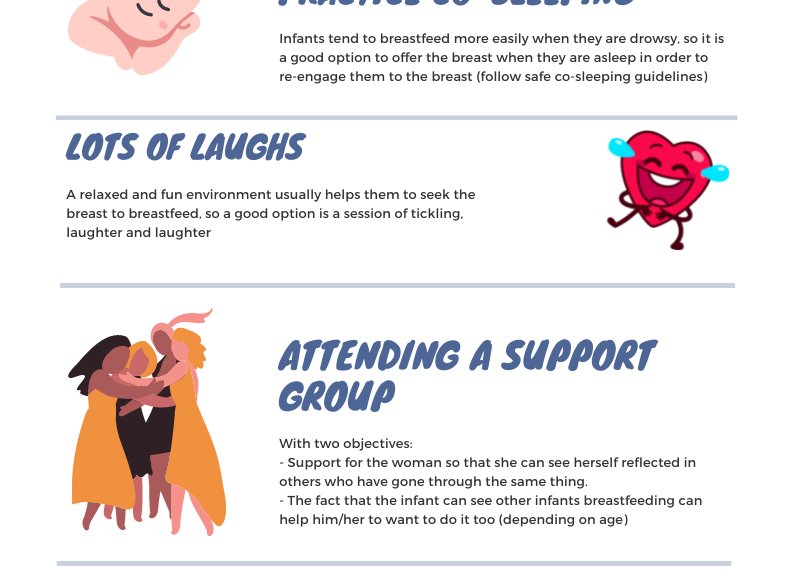
Lactation restoration techniques
Lactation restoration techniques: refusal of the breast by the infant at some point during the breastfeeding journey is a situation that can occur with some frequency. In this context, the mother is likely to interpret this situation as an infant-induced attempt at weaning. When this happens before the age of one year, it is very uncommon that this stems from an infant’s own willingness to stop breastfeeding, but usually, there are rather other underlying causes.
Lactation restoration techniques
Some of the causes of breast refusal, which can cause premature weaning, are:
- Supplementing milk to the infant with a method of rapid flow causing the so-called nipple-teat confusion.
- Infection or illness of the infant (ear infection, oral thrush, upper respiratory tract infections, algias or the appearance of nasal mucus that prevents synchronized breathing with swallowing, etc).
- Inaccurate initiation of complementary feeding by favouring the intake of solids and eliminating or denying breastfeeding sessions.
- Situations related to the mother, for example, after the infant has been frightened by a mother’s scream after a bite, coinciding with the return to work, a new pregnancy, etc.
When meeting a mother in this situation in consultation, it should be remembered that this can be experienced in a very distressing way. Many times, this situation is perceived as a rejection of her as a mother, so it is important to validate her feelings and not minimize the emotions she is feeling, find out what her wishes are in relation to breastfeeding and jointly search for possible causes of this rejection.
Although it is possible that the infant may return to breastfeeding spontaneously, there will be cases in which weaning may be prolonged and even definitive.
Actions such as forcing the baby to breastfeed or not offering solid foods to make the baby hungry are not appropriate, as they can increase the rejection of the breast as well causing a lot more anxiety to both the baby and the mother.
In the following infographic, you can find resources for the infant when the mother desires so, to return to the breast. If the cause of rejection was due to pain or infection, this situation must have improved or been resolved first. If the cause is the flow of milk supplementation, you can also discuss with the family the possibility of offering a method similar to direct breastfeeding.